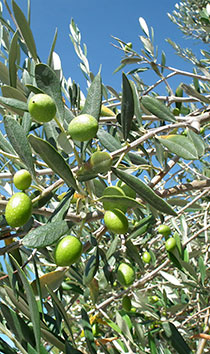27nov 2016
Ebola of Olive Trees’ Arrives in Spain
A By REDA ATOUI on November 27, 2016
Filed in Business
vicious pathogen dubbed the “Ebola of olive trees” by Spanish newspaper El Mundo and that, according to experts who have had to deal with it in the past, has the potential to devastate the European Union’s olive harvest has been spotted for the first time 0n the island of Mallorca.
SEE MORE: Complete Coverage of the Xylella Fastidiosa OutbreakThe disease, Xylella fastidiosa, ranks among the “most dangerous ones in the world,” to crops and is a very serious threat, say experts. The pathogen colonizes the vessels that a plant uses to transport water and nutrients.
The result is that the plant suffers severe symptoms such as scorching and wilting of its foliage and eventually dies. The fact that the bacterium has numerous hosts and vectors is a concern for local authorities as the likelihood of a complete contamination on the island is a scenario that has not been excluded.
The pathogen was detected for the first time in Mallorca by officials from the Balearic’s Department of Environment, Agriculture, and Fisheries during a routine check on three cherry trees located in one of the city’s garden centers. It has yet to infect the island’s olive trees but authorities have remained wholly cautious about the issue.
In an effort to prevent further contamination government officials have established a movement ban on the island covering 15,000 hectares; the aim is to “contain and eradicate the bacterium’s spread.” Spanish authorities are performing tests on other plants and searching for insects that vector the disease in order to gauge its spread and to eventually eradicate it.
Such outbreaks have become a major preoccupation not only for Spain, but in Italy and the whole European Union while the olive oil market has been affected by mediocre harvests and increases in olive oil price in 2016.
In fact, the European Union’s 2016 olive oil production is expected to sharply decline as the sector has faced many threats. Drought and diseases have stroke Southern France and Italy, and Spain, the world’s largest olive oil producer, has faced uncertainties stemming from the government’s pessimistic yield forecasts. The “Ebola of olive trees” is yet another major concern for European olive oil growers who have had a rough year.
The Xylella fastidiosa bacterium was first discovered in Puglia, Italy in 2013. The pathogen greatly affected Italy’s olive harvest — hundreds of thousands of hectares of olive oil had been ravaged — and later wreaked havoc on Southern France’s olive oil trees.
It has been previously spotted in Asia and in America. 2015’s Xylella fastidiosa outbreak resulted in a twenty-percent increase in olive oil prices. In the event that Spanish authorities would not be able to eradicate it, olive oil price could see an unprecedented rise.
Retour


